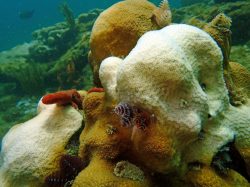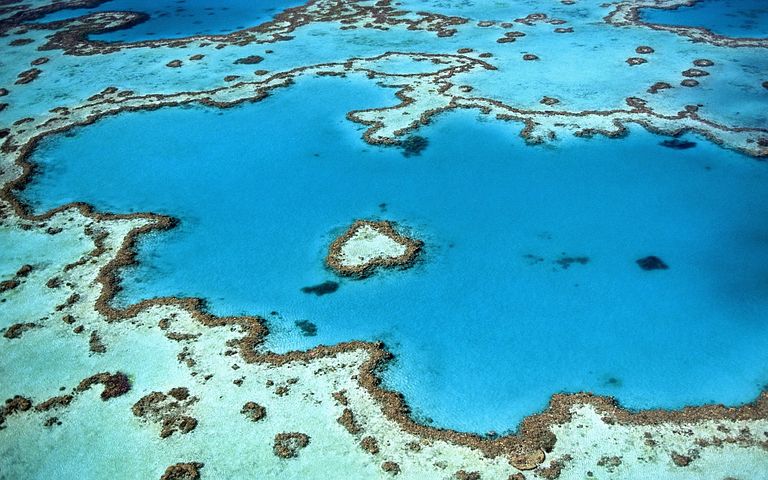
Less than 15 minutes. That’s the amount of time it can take the light emitted by the giant ball of fire in the sky we call the sun to begin burning human skin. Those ultraviolet rays (UVA and UVB) can cause premature aging of cells, long-term skin damage in the form of wrinkles, basal and squamous cell cancers, and melanoma.
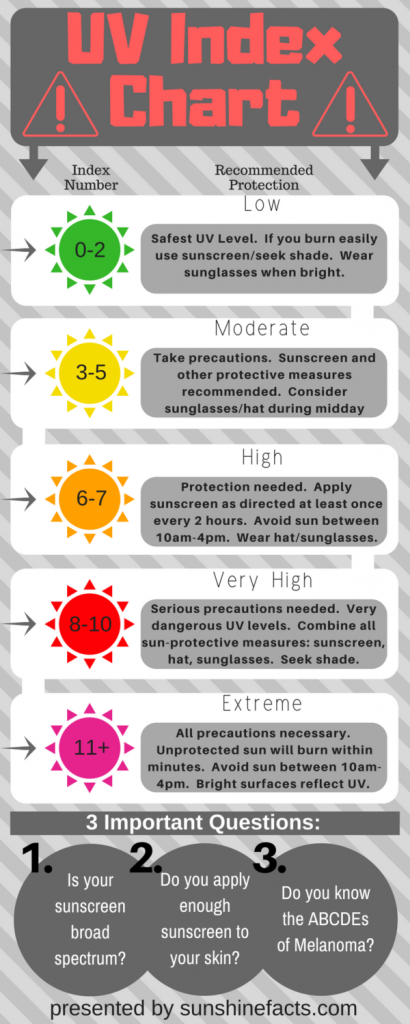
According to the Skin Cancer Foundation, 1 in 5 of us will be diagnosed with some form of skin cancer in our lifetimes.
Alarming? For sure.
Luckily, being the ingenious little creatures that we are, we invented a little something to protect us from the burn – sunscreen.
Sunscreen acts to either block or reflect both UVA and UVB rays (these are known as “physical” or “mineral” sunscreens and contain ingredients such as zinc oxide and titanium dioxide), OR absorb and reduce the ability of UV rays to penetrate the skin (these are known as “chemical” sunscreens and contain ingredients such as oxybenzone, octinoxate, avobenzone, and PABA).
Regular and proper use of sunscreen has been shown to lower the risk of developing skin cancers by 40-50%.
Unfortunately, there are downsides to sunscreen usage we’re only now beginning to understand, both for the humans it’s meant to protect, and our planet.
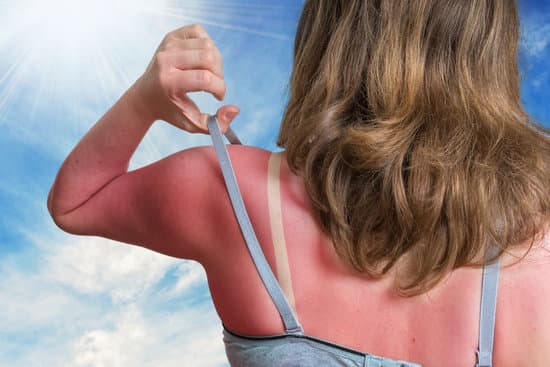
In February 2019, the Food and Drug Administration of the United States issued a report stating that of the 16 most common ingredients found in sunscreens, only 2 were considered to be generally recognized as safe and effective (GRASE) — zinc oxide and titanium dioxide. Of the rest, PABA and trolamine salicylate were NOT considered GRASE, and there is insufficient data on the remaining 12.
Is sunscreen safe for you?
As we inhale these chemicals when we spray them on in their most convenient form, ingest them from the products we apply on our lips, and absorb them through our skin, no one knows the actual long-term effects they may have on and in the human body. Many sunscreen chemicals have been measured in blood, breast milk, and urine samples. Some lab studies even suggest that certain chemicals may mimic hormones and act as so-called “endocrine disruptors”. At this time, there is insufficient research available to say whether this is 100% true, or what the ultimate consequences of it may be.
One thing we do know for sure, the incidence of skin cancer is on the rise world-wide. And we do need to protect ourselves.
Is sunscreen safe for the environment?
When do the majority of us apply our sunscreen? When we’re having our summertime fun at the beach. Consequently, where does that sunscreen end up? In our oceans. An estimated 6,000 to 14,000 tons of sunscreen go into coral reefs each year.
The main concern with this is the chemical sunscreen ingredient oxybenzone, which has been shown to affect sea life in numerous ways:
–Green Algae: Can impair growth and photosynthesis
–Coral: Accumulates in tissues. Can induce bleaching, damage DNA, deform young and even kill
–Mussels: Can induce defects in young
–Sea Urchins: Can damage immune and reproductive systems and deform young
–Fish: Can decrease fertility and reproduction and cause female characteristics in male fish
–Dolphins: Can accumulate in tissue and be transferred to young
New research even suggests that the GRASE ingredients of physical/mineral sunscreens, particularly zinc oxide, may be affecting the health of our reefs.
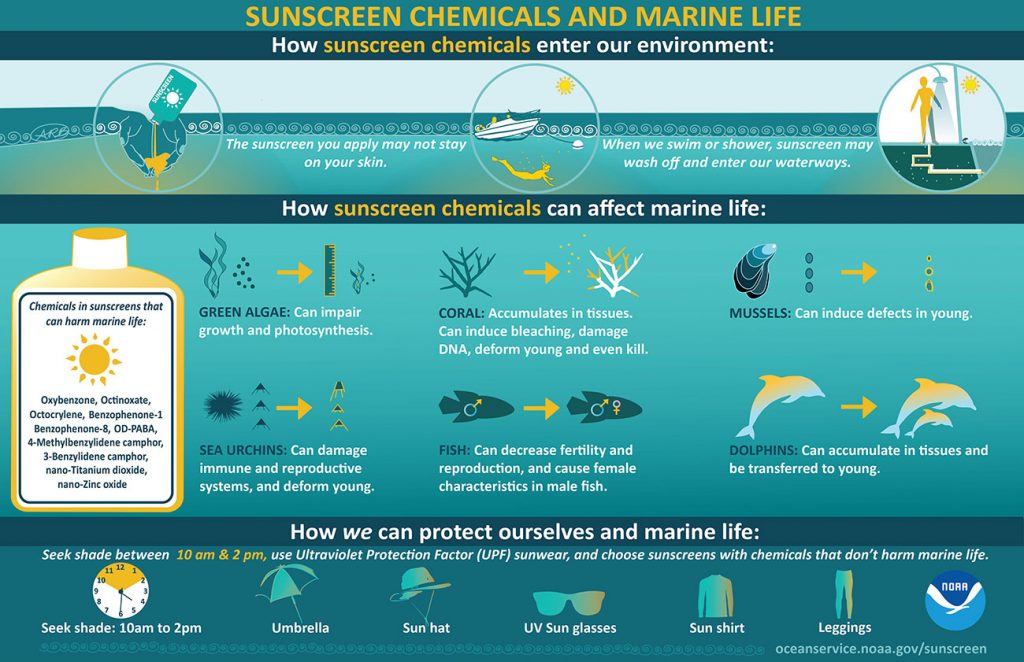
Is it really us or them?
In short, no. We can protect our skin from the damaging effects of the sun in ways that do not also add to the ongoing damage of our oceans.
Some lawmakers have already taken action to prove that sun care can be sustainable. In July 2018, Hawaii became the first state in the United States to ban chemical sunscreens containing oxybenzone and octinoxate. Despite heavy criticism that the ban will put people at greater risk for skin cancer, it will go into full affect in 2021.
And in November 2018, the Western Pacific nation of Palau became the first country to ban many kinds of sunscreen, citing the dangers to coral and marine life. This ban is set to go into effect in 2020.
A sunnier outlook on tomorrow
It all comes back to ingenuity. Right now, scientists are hard at work on sustainable solutions to our sunny dilemma.
Scientists in Puerto Rico are developing biodegradable microbeads that will soak up oxybenzone.

Meanwhile, at the College of Pharmacy at the University of Florida, a more efficient way to harvest shinorine — a natural sunscreen produced by microbes called cyanobacteria — has been discovered.
And at the University of Witwatersrand in Johannesburg, a team of international scientists has found an environmentally friendly way to produce sunscreen from cashew nut shells.
In the meantime, you can find a list of reef friendly sunscreens here. Some other reef safe alternatives to chemical sunscreens include:
–Avoiding the sun when it’s at its peak from 10am to 2pm
–Wearing protective clothing (hats, sunglasses, and Ultraviolet Protection Factor sun-wear)
–Using a UV Protection Umbrella (like a classic parasol, but unisex and designed to block up to 99% of UV rays. We know these will be all the rage soon, and they come in a variety of fun under-the-umbrella colors!)
We CAN be sun safe and reef safe at the same time!


